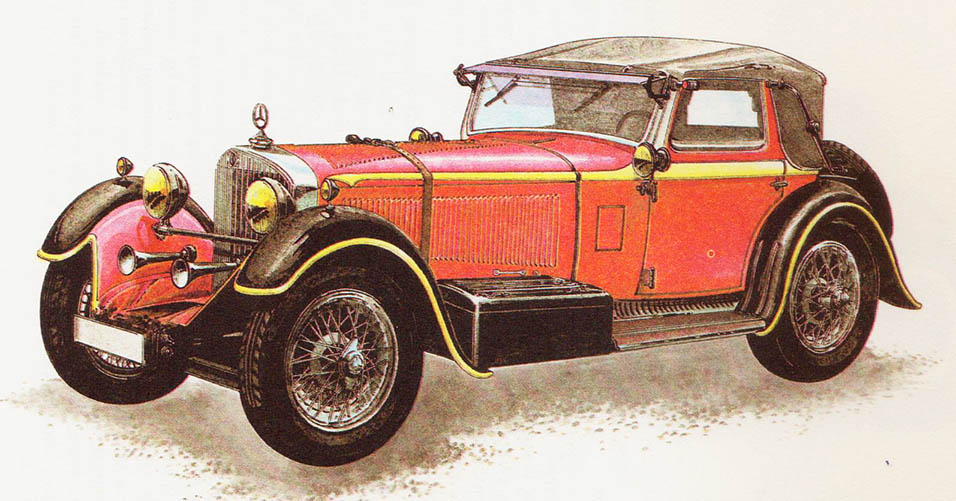MERCEDES-BENZ SSK – year 1931
Manufacturer: Daimler Benz AG, Stuttgart-Untertürkheim, Germany.
Daimler already in 1921 r. presented its first car with a compressor at the Berlin exhibition. It was a type 6/25/40, which brought the company world priority in the mass production of cars with a compressor. It had an engine with a capacity of 1570 cm3, cylinder diameter 68 mm, with a stroke of the piston 108 mm. The camshaft was in the cylinder head. The car developed its maximum speed 135 km/h. The Roots compressor was activated by a special clutch by sharply depressing the accelerator pedal all the way to the floor.

Manufacturer: Daimler Benz AG, Stuttgart-Untertürkheim, Germany.
W 1929 r. type SSK appeared. Initially, it had the same engine as the SS model - capacity 7065 cm3, the diameter of the cylinders 100 mm, piston stroke 150 mm. In the series version, the engine developed power 125 kW (170 KM), by 2900 RPM, or 166kW (225 KM) by 3300 RPM.
At that time, it was possible to compete in races for great prizes on serial cars. The SSK model has also had a series of successes in mountain racing. For racing purposes, the chassis of the SS model has been shortened from 3400 mm by 2930mm, what the name expressed: SSK - super sport in short (super short sport). In this situation, with the same capacity, the engine power was increased to 133 kW (180 KM), by 2900 RPM, and from the compressor to 184 kW (250 KM) by 3300 images/ min. Depending on the gear ratio used in the gearbox, the car developed up to 200 km/h. Various roadster convertible bodies were mounted on the chassis, travel and racing varieties.
Racing variants should be as light as possible, that is why a lightweight version of the Mercedes was created - the SSKL model (super sport short easy - super sport krótki lekki).
W 1930 r. Hans Nibel, the creator of these successful models, raises their power again by means of a compressor 220 kW (300 KM) by 3400 RPM. The era of Mercedes racing cars has arrived. Take control of this monster with direct steering without power assistance, with slow gear selection and ineffective brakes, and at the same time, with the sensitive clutch of the compressor, only some competitors succeeded. They included Rudolf Caracciola, Manfred von Brauchitsch and Hans Stuck.